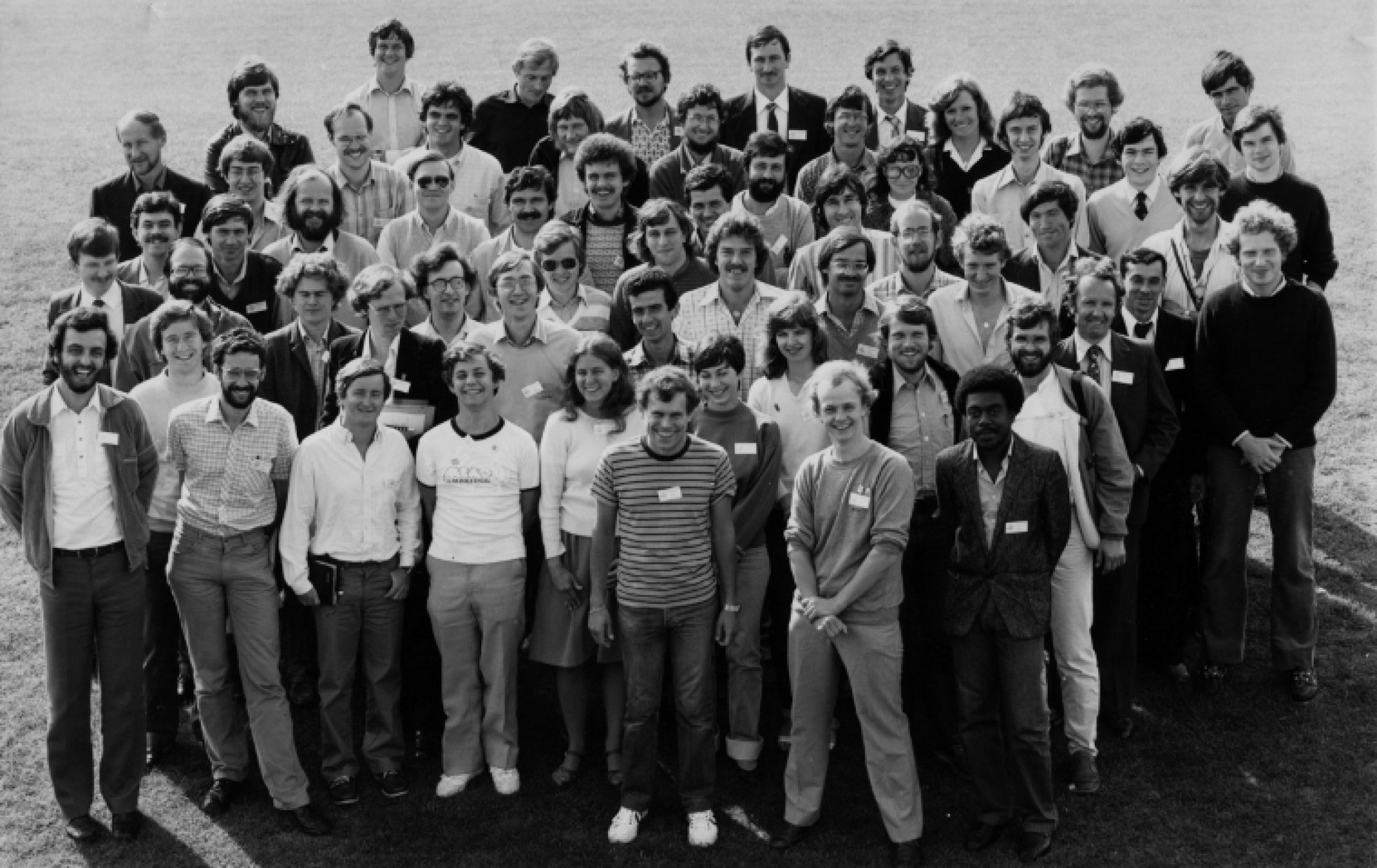by Harry van der Laan
The CONCEPTION of YERAC by three Europeans at NRAO, Charlottesville, Virginia, USA.
In the summer of 1967 Blum, Mezger and Van der Laan freqently had coffee and lunch together. B and M had only met at NRAO that summer. Later these two worked together to create the successful and ongoing Franco-German collaboration IRAM with mm-facilities on the Plateau de Bure (Fr) and Pico Veleta (Esp). I (HvdL) had just accepted an offer for a staff position in Leiden from Jan Oort after completing my PhD at Cambridge in 1963 with Martin Ryle and working at a Canadian university in the winter- and at NRAO in the summer half years.
When I learned B and M only got to know one another in the US, I wondered out loud how we could promote that young Europeans in radio astronomy could be sure to meet each other ‘at home’ and to exchange experience, as I saw young Americans do. What followed to make this happen is sketched below and continues to this day.
Brief account of the setup for a conference series with young European radio astronomers as participants, first toyed with by Emile Blum (*1923), Peter Mezger (*1928) and Harry van der Laan (*1936) at NRAO, Charlottesville, Virginia, USA in June 1967, where all three were guest scientists at the invitation of director David Heeschen. A year later the series came to be named YERAC.
The concept was formalized at Meudon, Observatoire de Paris on 17 May 1968 at the first YERAC during May 14 to 17 with Professor Emile BLUM as host.
YERAC purpose:
To bring together young radio astronomers working at European institutes, observatories, laboratories and universities in order to provide them with early opportunities for transborder interactions with peers. The intention of the three initiators was to foster scientific and technical collaborations, exchanges of ideas, working visits and crossborder appointments. The hope was thus to give European radio astronomy a more dynamic and ambitious character, ultimately to make it as natural for Europeans from different nations to work together as it then already was for radio astronomers in the different states of the USA.
In order to avoid all bureaucracy and overhead expenses, the Troika promulgated the following rules:
-
YERAC shall take place once a year, shortly before or after midsummer, the next one always in another institute and preferably in another country.
-
The director of the host institute for YERAC #n assures that the host for YERAC #n+1 is designated and that this role is accepted. So there is no secretariat, no budget, no administration.
-
The host institute is responsible for the entire programme, scientific and social, and for all expenses necessary for its execution, including announcements, invitations to participating organizations and the costs of room and board.
-
The participating organizations compose a delegation for each YERAC, submit their names and area of current research to the host and provide the travel funds, each for its own delegation.
-
The participants shall normally be thirty years old or younger, shall have a doctorate- or be working as research students in astronomy.
The troika was closely involved in getting the series going, most importantly the first time with Emile BLUM as host and organizer. The second YERAC was held at Jodrell Bank, U.K. I hosted the third YERAC in Dwingeloo, Mezger the fourth in Effelsberg. The first YERAC took place, quite by accident, in the midst of the Paris student revolt in May 1968. In the Quartier Latin where most participants were accommodated, the streets were full of gendarmes and heaps of cobble stones. There were also demonstrations on the Meudon campus of the Observatoire de Paris and one YERAC session was interrupted by a noisy crowd of student-demonstrators who marched through the lecture hall carrying banners and shouting anti-capitalist slogans. Nevertheless the programme unfolded as planned.
There is an overview of all YERACs held from 1968 onwards at the URL below*. Note that three meetings of the possible 45 failed to materialize, in 1998, in 2001 and 2002. Somehow hosts were not designated or failed to do what was required. Nevertheless the record of 42 meetings in 45 years for so simple an initiative is heartening. YERAC has given many hundreds of young radio astronomers a great impulse in their science lives. Without YERAC, European radio astronomy would not have achieved its worldclass quality, innovative development and dynamic ambitions.
This note is written for the record, and dedicated to Emile BLUM who died in 2009 at the age of 84. I am grateful to be invited to Russia in order to tell this story at the Pushchino Radio Observatory during the 42nd YERAC from 17 to 21 September 2012.
Harry van der Laan, September 2012
Leiden Observatory and ASTRON, The Netherlands
